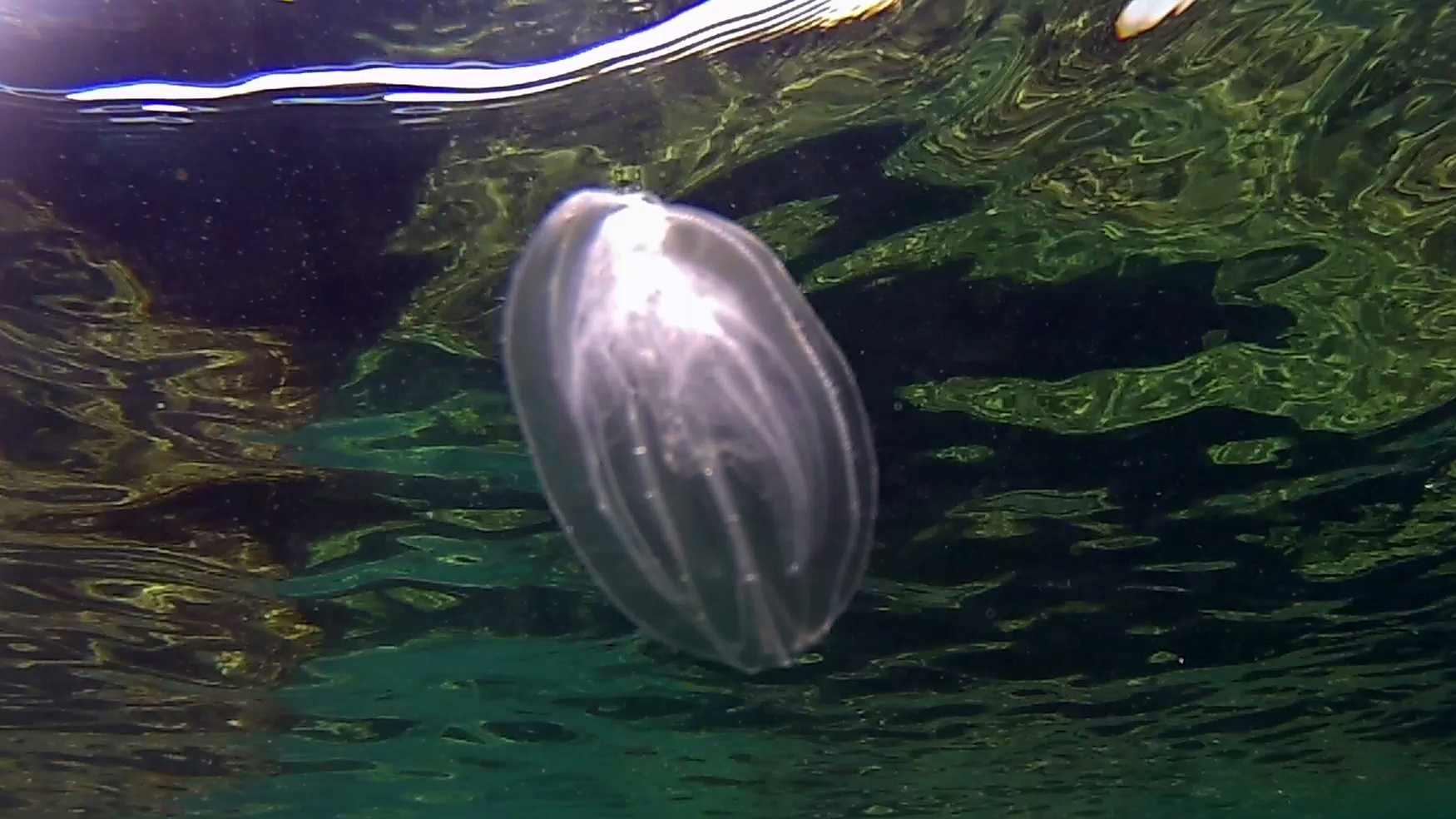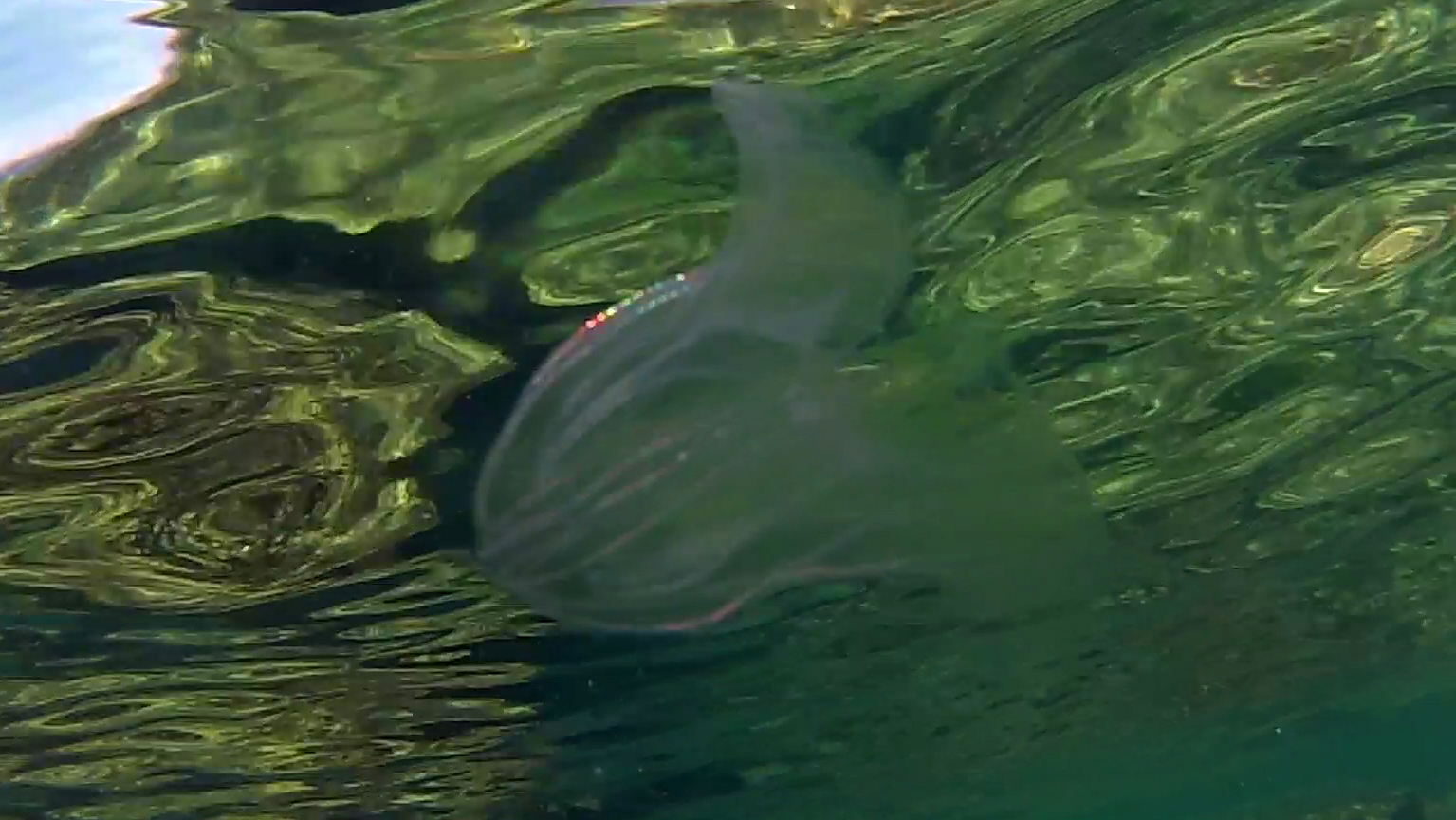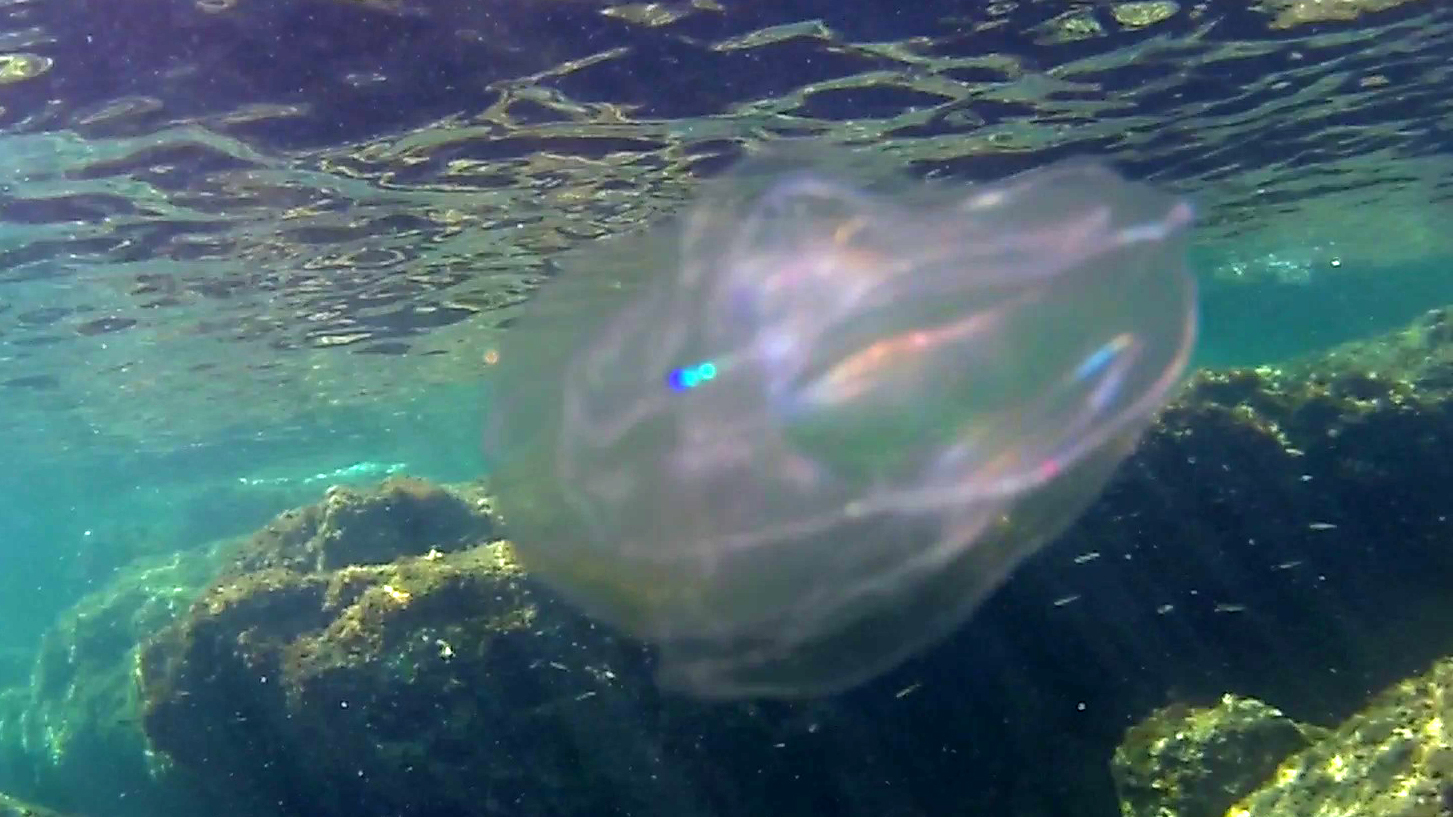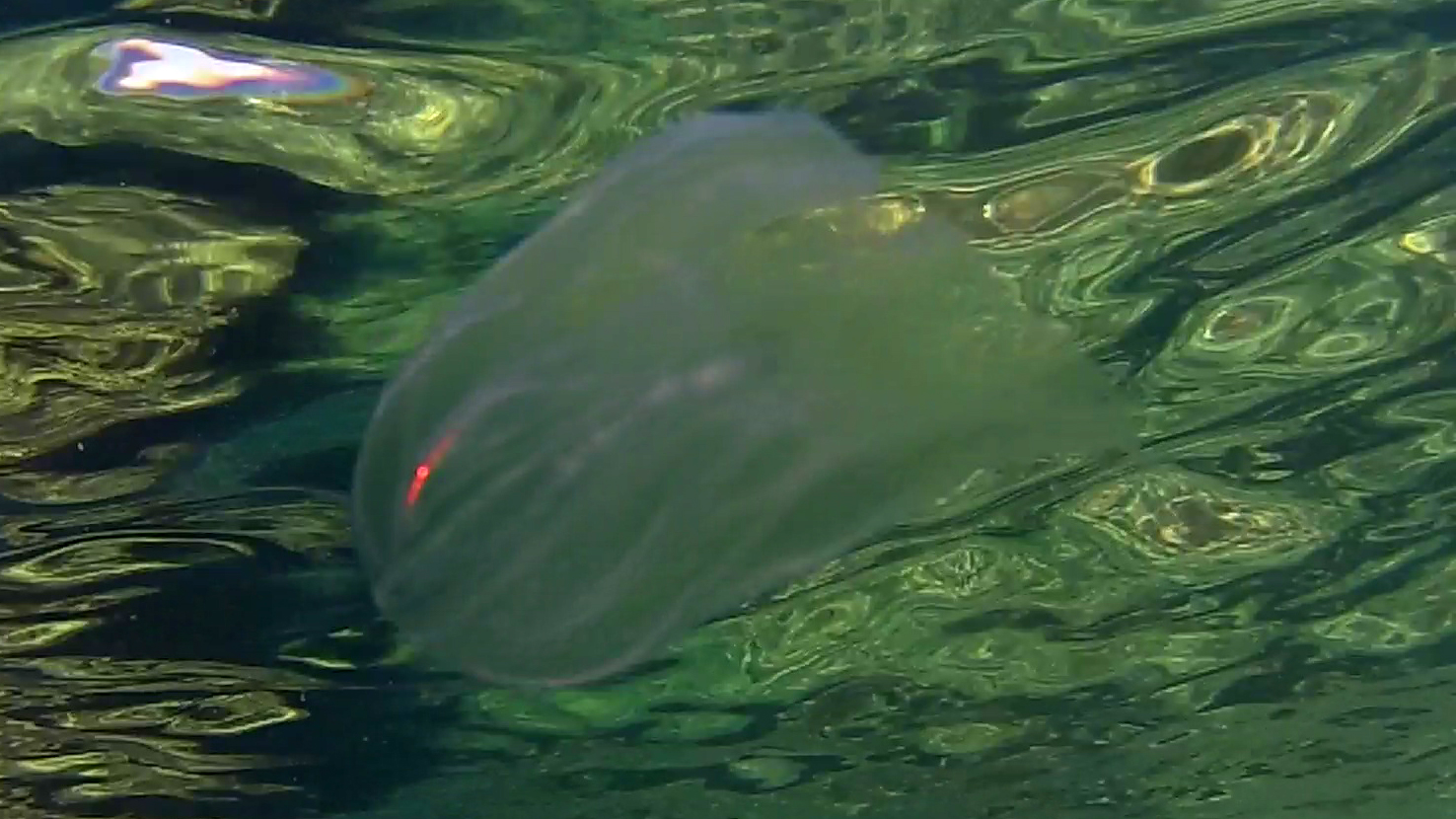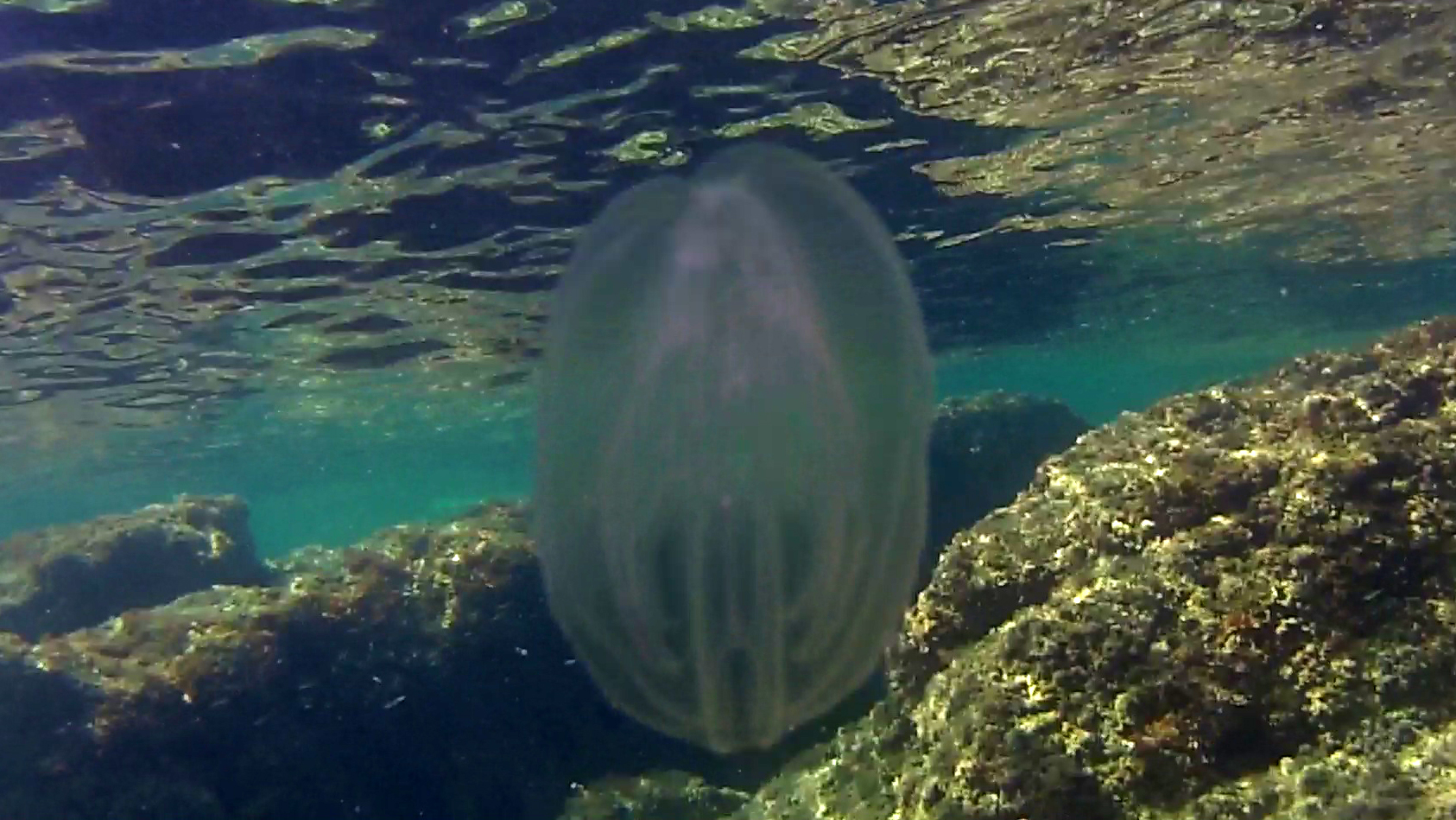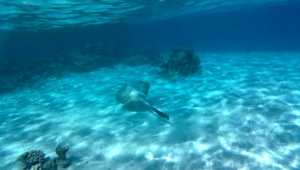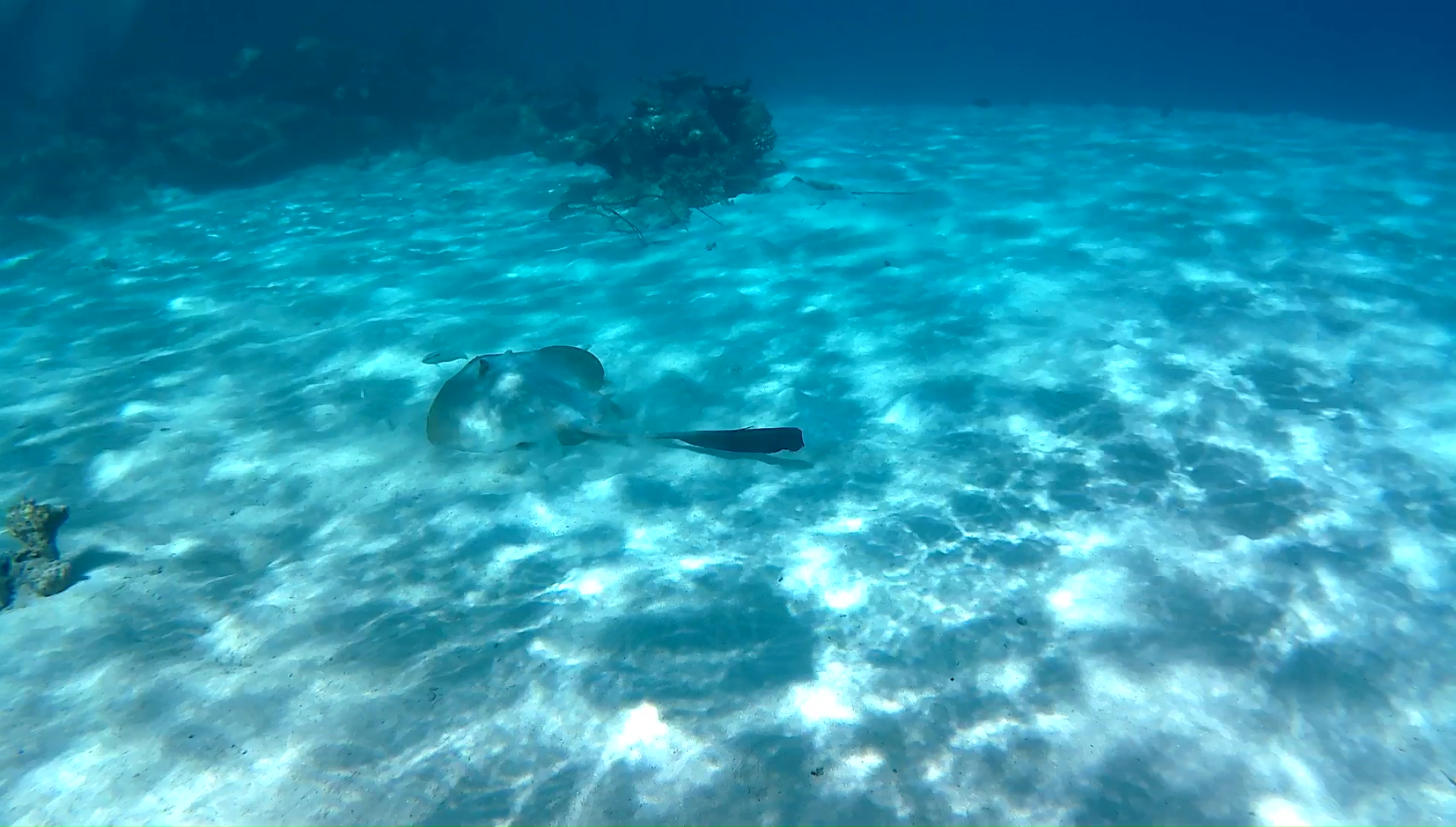Mnemiopsis leidyi, the warty comb jelly or sea walnut, is a species of tentaculate ctenophore (comb jelly). It is native to western Atlantic coastal waters, but has become established as an invasive species in European and western Asian regions. Three species have been named in the genus Mnemiopsis, but they are now believed to be different ecological forms of a single species M. leidyi by most zoologists. Ctenophora Mnemiopsis leidyi Sea Walnut Noce di Mare intotheblue.it
This comb jelly has the capacity for self-fertilization, as they are hermaphroditic. They have gonads that contain the ovary and spermatophore bunches in their gastrodermis. This animal carries 150 eggs along each meridional canal. Eggs and sperm are released into the water column where external fertilization takes place. The spawning commences at late evening or at 1:00 or 2:00 a.m. The spawning eggs develop a thick outer layer within 1 minute after touching the seawater. As many as 10,000 eggs can be produced from large specimens in areas with good prey abundance. Egg production can start when the animals reach about 15 mm in length. Egg production increases with ctenophore size, and it is unclear when senescence occurs.
This comb jelly has the capacity for self-fertilization, as they are hermaphroditic. They have gonads that contain the ovary and spermatophore bunches in their gastrodermis. This animal carries 150 eggs along each meridional canal. Eggs and sperm are released into the water column where external fertilization takes place. The spawning commences at late evening or at 1:00 or 2:00 a.m. The spawning eggs develop a thick outer layer within 1 minute after touching the seawater. As many as 10,000 eggs can be produced from large specimens in areas with good prey abundance. Egg production can start when the animals reach about 15 mm in length. Egg production increases with ctenophore size, and it is unclear when senescence occurs.
Mnemiopsis has been included in the list of the 100 most invasive invasive species in the world.
The damage is due to his fertility and his zooplankton-based diet. It has been calculated, for example, that its presence is at the origin of the 80% decline in the zooplankton of the Caspian Sea. Strong repercussions on the environment and on the economy have had its introduction in the Black Sea. In other seas its impact has been important, even if minor, probably due to the presence of predators or other planctophagi. The harmfulness derives from the consequences of its development (it adapts very easily to new environments, withstanding wide temperature variations), since the decrease in zooplankton directly or indirectly reduces the local fish populations.
https://it.wikipedia.org/wiki/Ctenophora https://it.wikipedia.org/wiki/Mnemiopsis_leidyi https://en.wikipedia.org/wiki/Mnemiopsis
 English
English Italiano
Italiano
